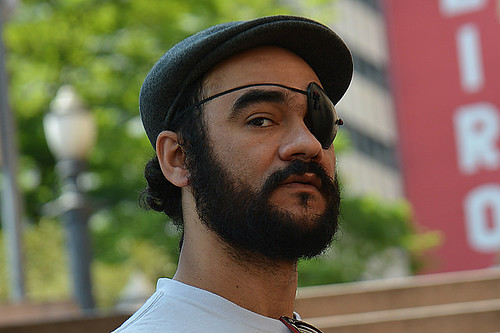On Nov. 29, the São Paulo Court of Justice (TJ-SP) denied an appeal in the second instance from Brazilian photographer Sérgio Silva, who sought compensation from the State for losing his left eye after being hit by a rubber bullet while covering a protest in São Paulo on June 13, 2013.
This is the second time that a court has denied the request from Silva, who was wounded by a rubber bullet, which were being fired by military officers during a wave of protests in the country in which several journalists were attacked by agents of the State.
Silva filed a lawsuit against the government of the State of São Paulo in October 2013 requesting compensation for moral, aesthetic and material damages in the amount of R $1.2 million (about US $370,000) and a monthly pension of R $2,300 (about US $700), according to the Brazilian Association of Investigative Journalism (Abraji). In August 2016, a lower court judge found that the journalist himself was responsible for the wound to his left eye because he was in the "line of fire between police and protesters."

Photographer Sérgio Silva said he will appeal to an international court against the Brazilian courts’ decisions. (Photo: Rovena Rosa / Agência Brasil)
In the judgement of the second instance, the three judges unanimously voted against Silva's request. Although they have stated that he was "not to blame" for the incident, the judges considered "there is no evidence" that the injury to the photographer's eye was caused by a rubber bullet, and therefore there is no "causal link to harmful conduct of the State," according to Ponte Jornalismo.
One of the judges said in the ruling that the injury could have been caused by "stick, stone, hand, head, marbles, soccer balls" and other objects, Abraji reported.
Silva said he will appeal to an international court against the Brazilian courts’ decisions. "I know and thousands of people know what happened that night, June 13, when police suppress the demonstration against the rate increase, shoot a protester, a lady on the street, in the face of the press," the photographer told Ponte Jornalismo.
"What you hear in a decision of this Court is that you have no evidence that it was a rubber bullet that blinded me, that it was an agent of the State who shot ... And the question remains: who handles guns with rubber bullets? Who promoted the wave of violence that night? Which people were injured? What is happening legitimizes the police action that night," he said.
Freedom of expression organization Article 19 stated that the decision of the TJ-SP "encourages police violence, selective repression, harassment of journalists and obscurity of police action." "The many cases of communicators injured in protests since 2013 show that these violations are not random, but a systematic action to silence those whose job it is to inform society. We can not see as mere coincidence a situation where a photographer is hit in the eye, like what happened with Sérgio Silva and others."
An Abraji survey conducted in late 2013 noted that there were 70 episodes of deliberate attacks on journalists during coverage of protests between June and October of that year. Fifty-five were attributed to security forces, almost 80 percent of the total. The other assaults came from protesters dissatisfied with the mainstream media’s coverage.
In the same protest in which Sérgio Silva was hit, Abraji recorded 14 attacks against media professionals, all of them by the Military Police of São Paulo. In addition to Silva, journalist Giuliana Vallone was also hit by a rubber bullet in the face during the same event.